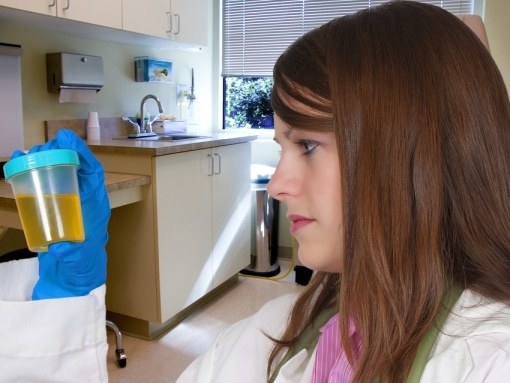How to detect bilirubin in the urine
In human blood are red cells, some of which are all time dies and is replaced by new cells. The decay they release hemoglobin, disintegrating into molecules of heme and globinemia chain. Heme is exposed to enzymes and is converted into indirect bilirubin, which is fat-soluble toxic substance. Indirect bilirubin in the liver is converted to direct (water soluble), then it simultaneously with the bile excreted into the duodenum. At malfunction of the direct bilirubin is thrown into the blood of bile, goes into the kidneys and found in urine. Indirect fraction to penetrate them, because don is water-soluble.
Bilirubin in the urine detected by several methods: Rosina breakdown and the breakdown Fouche. During the tests Rosina 2-3 ml of urine layer an alcoholic solution of iodine (1%). If on the border of two liquids a green ring, it means that in the urine elevated bilirubin. Sample Foucher is performed using a solution of barium Chloride" (15%). It is added to the urine were mixed and passed through a filter. Then on the filter drop reagent Fouche. The emergence of green crystals indicates the presence of bilirubin in urine.
Causes of bilirubin in urine
The appearance of bilirubin in urine (bilirubinuria) is a symptom of disorders of the liver. In particular, this occurs in obstructive jaundice, when narrowed duct through which the bile is excreted into the small intestine. The reason for this is usually inflammation of the pancreas. Bilirubin in the urine is increased due to the inflammation of the liver (hepatitis) bacterial, viral or toxic nature, due to cirrhosis, trauma, metastases in the liver. In these cases, urinalysis reveals only the direct bilirubin, which enters the bloodstream and kidneys. Its content in blood is also higher than the norm. There are disorders for which there is a surplus of indirect bilirubin (e.g. hemolytic anemia), in this case, the analysis of his blood shows, and urinalysis - no.
Symptom of bilirubinuria is jaundice: the patient the sclera of the eyes, mucous membranes and skin become yellowish. This can be seen with the naked eye. Liver diseases are also accompanied by heaviness in the right hypochondrium with fever, nausea, bitter belching. The urine becomes dark in color, and the feces becomes light. Itchy skin, sometimes there is hepatic colic. With the appearance of one or more symptoms you need to go to the doctor, because bilirubinuria is a sign of a serious liver disorder. Depending on the root causes of bilirubin in urine prescribe the appropriate treatment.
